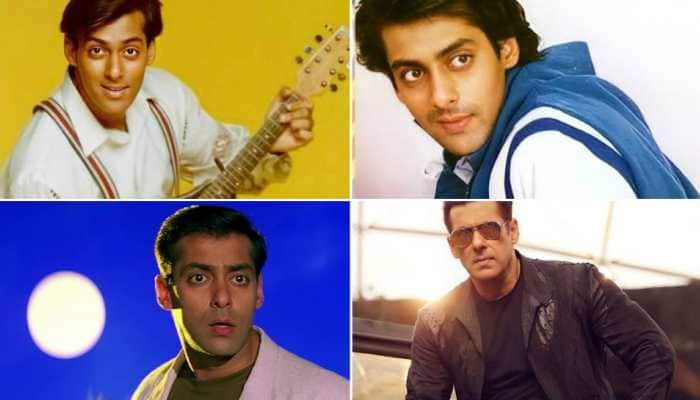Judge me not: A need for safe spaces for victimized women and girls
“She asked for it”.
Trending Photos
)
“She asked for it”.
“If she lost weight she’d be pretty”.
“She got promoted because of her looks”.
These statements reflect the usual body shaming, causal sexism, and blatant objectification that women and adolescent girls, go through every day. Be it for the clothes they wear or the opinions they voice; the statistics for harassment of women in India tell a horrific story. At 39 crimes against women every hour, India is among the most unsafe countries in the world. Forty per cent of Indian women face some sort of violence or harassment before they turn nineteen, and more than 90% of women and girls have faced sexual harassment – be it in public spaces or online.
A middle-aged woman in UP was beaten, stripped, and paraded naked for resisting harassment. Zaira Wasim the Dangal actress was groped in a Mumbai bound flight by a fellow passenger and Indian cricketer Mithali Raj was trolled for wearing a spaghetti top. Stalking, verbal harassment, leering, physical violations (touching /pinching/groping), cyber bullying etc. are commonplace occurrences.
Be it Zaira, Mithali, Priyanka, or the unnamed woman in UP. Be it women at the highest echelons of power or just your everyday school girl; this is no country for women.
Rooted In Psyche: Why Sexual Harassment Is Difficult To Curb
The problem, however, runs deeper than harassment. It is the casual acceptance of sexual abuse as a normal occurrence that happens to everyone. Breakthrough, an organisation, which works to change the norms, and practices that perpetuate violence against women & girls, conducted comprehensive research, which found that 90% of the women who face harassment do not report it, nor do they take any action against it.
Intensive psychological studies have shown that there are several reasons why women choose not to take action - they feel ashamed and embarrassed, the issue is trivialized due to conditioning and statements such as “boys will be boys”, and they fear the consequences of reporting.
The situation is even worse for the adolescent girls who are dealing with issues of consent, safety, stigma, sex, segregation, and harassment all on their own with no one to turn to or talk with.
How do we give these women and children the courage to stand up and speak out? How do we give them the assurance that they will be heard and not judged? That’s a solution we all must address collectively.
A 6-step approach that can turn the tide
While there are some advocates for segregation, surveillance etc. to address sexual harassment, these are just band-aid solutions not effective in the long run. There are no quick fixes to this issue and we must focus on bringing about a long-term mindset change.
1. Pinpoint the issue: Preventing abuse of women and girls today is less about drafting laws and more about changing deep-rooted cultural norms and practices. How do we put a stop to the victim blaming mentality? How do we make people realize that sexual harassment isn’t somebody else’s problem and it won’t go away by ignoring it, hiding it or denying someone the right to step out?
2. Use creative ways to build awareness: Awareness that something is wrong is critical to change the norms and practices that perpetuate violence. Workshops, meetups, and coffee table discussions can be hosted to hear out stories. Influencers and strong personalities can talk about how they have dealt with abuse.
3. Encourage dialogue: Safe spaces – online and physical - can give voice to many unheard stories, heal old wounds, and pave the path for a better tomorrow. We especially need intergenerational dialogue between adolescents and their parents, so that girls, in particular, have a support system within their families. For instance, we recently launched 4 films on young people facing online harassment and their parents’ dilemma on how to approach the subject. In the end, each video ends with a positive call for action, with parents becoming a safe space for their children.
4. Mobilise men and boys: We have seen an ~20 percentage point decrease in men and boys who indulged in harassment after being part of some of our programs.
5. Empower adolescents: It’s also important to address gender attitudes and behaviour when views are still malleable. Working with adolescents to discuss the rights and agency of girls, embedding leadership skills and confidence in young girls is vital to strike at the root of gender-based discrimination and violence. Our school-based curriculum that reaches over 200,000 adolescents across 4 states has been proven to bring significant change in gender behaviours and attitudes of both boys and girls.
6. Make sure that the systems already in place work effectively: There is a need to ensure greater institutional response and accountability. The reporting mechanisms must be made more accessible and receptive to complaints. There is a need to spread awareness on legal forms of redress (such as helpline numbers) and ensuring that the law is upheld.
This is a road or clearly defined pathway that so far has been not been well travelled, perhaps because the minefields are still many. But with many more organisations and individuals leading the way, this narrative can and will change. Are you up for it?
Sohini Bhattacharya, CEO & President at Breakthrough, an organisation working to make violence and discrimination against women and girls unacceptable. She is a social change enthusiast with 25+ years of experience in the development sector.
(Disclaimer: The opinions expressed above are the personal views of the author and do not reflect the views of ZMCL.)
Stay informed on all the latest news, real-time breaking news updates, and follow all the important headlines in india news and world News on Zee News.
Live Tv







)
)
)
)
)
)
)
)
)
)
